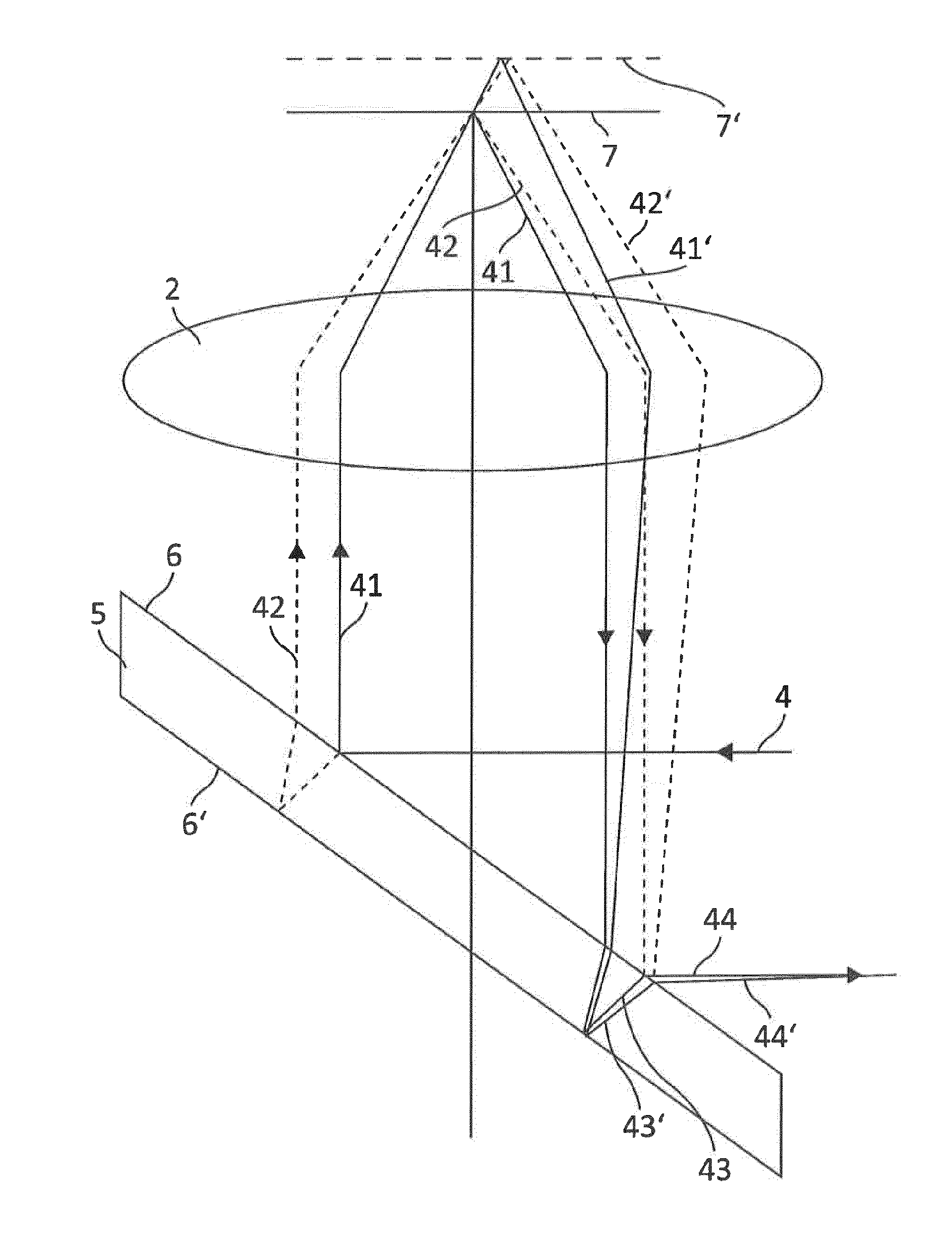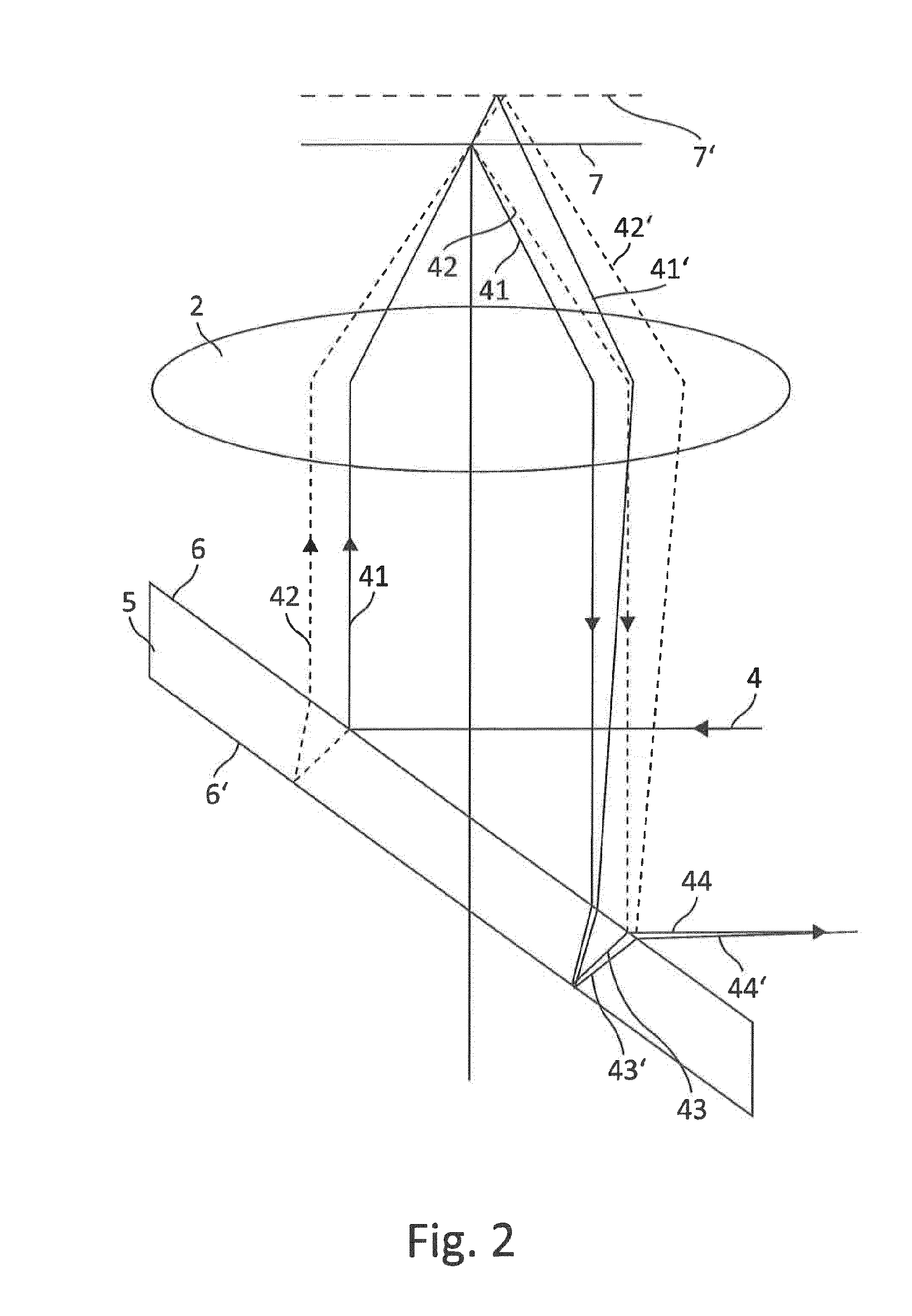Microscope Having an Autofocusing Device and Autofocusing Method for Microscopes
a technology of autofocusing and microscope, which is applied in the direction of microscopes, optics, instruments, etc., can solve the problems of lateral displacement of the location of the sharpest image on the ccd detector, inaccurate autofocusing, and complicating or distorting the evaluation, so as to achieve rapid and precise autofocusing and reduce the degree of error susceptibility
- Summary
- Abstract
- Description
- Claims
- Application Information
AI Technical Summary
Benefits of technology
Problems solved by technology
Method used
Image
Examples
first embodiment
[0079]In a first embodiment, let it be assumed that (proceeding from the depiction in FIG. 1) the two delimiting surfaces 6 and 6′ enclose a wedge angle between them, such that the wedge angle spans a plane (in this case, the drawing plane) in which the outgoing and returning autofocus beam path 4 is located. In such a case, which can easily be illustrated with reference to the depiction in FIG. 1, the sub-beams constituting sub-beam 44 would need to travel along different optical path lengths even in the case of an optimal focus setting, so that an interference stripe pattern at detector 9 would be the consequence. Defocusing in one direction (for example, in a direction away from objective 2) can increase this optical path length difference, while defocusing in the other direction (for example, toward objective 2) can compensate for the optical path length difference present in the focused setting. In the case of compensation, the interference pattern on the detector would disappe...
second embodiment
[0080]In a second embodiment, what is used as deflection device 5 is an optical wedge in which the wedge angle spans a plane that is perpendicular to the drawing plane of FIG. 1, i.e. perpendicular to the plane in which the outgoing and returning autofocus beam path 4 is located. This situation is depicted in FIG. 3. It may be gathered that the configuration depicted in FIG. 3 results in a 90° rotation of the slope of the interference stripes. If it is assumed that in a configuration according to FIG. 1, interference stripes that extend substantially horizontally are produced on the detector surface in the event of defocusing, it is then apparent that what occurs in the case of a configuration according to FIG. 3 is a “baseline” interference in which the interference stripes proceed vertically. The interference stripe orientations described here of course serve only for better elucidation of the effects of using an optical wedge as deflection device 5. It is consequently also possib...
PUM
 Login to View More
Login to View More Abstract
Description
Claims
Application Information
 Login to View More
Login to View More - R&D
- Intellectual Property
- Life Sciences
- Materials
- Tech Scout
- Unparalleled Data Quality
- Higher Quality Content
- 60% Fewer Hallucinations
Browse by: Latest US Patents, China's latest patents, Technical Efficacy Thesaurus, Application Domain, Technology Topic, Popular Technical Reports.
© 2025 PatSnap. All rights reserved.Legal|Privacy policy|Modern Slavery Act Transparency Statement|Sitemap|About US| Contact US: help@patsnap.com



